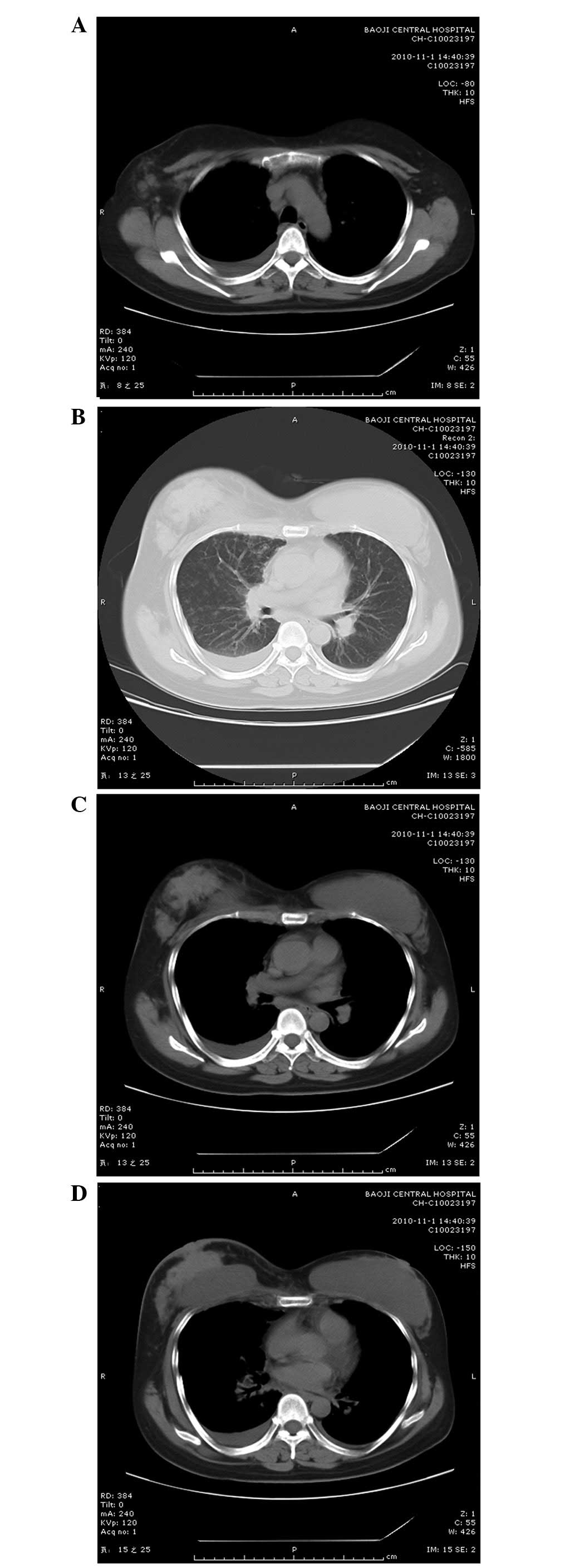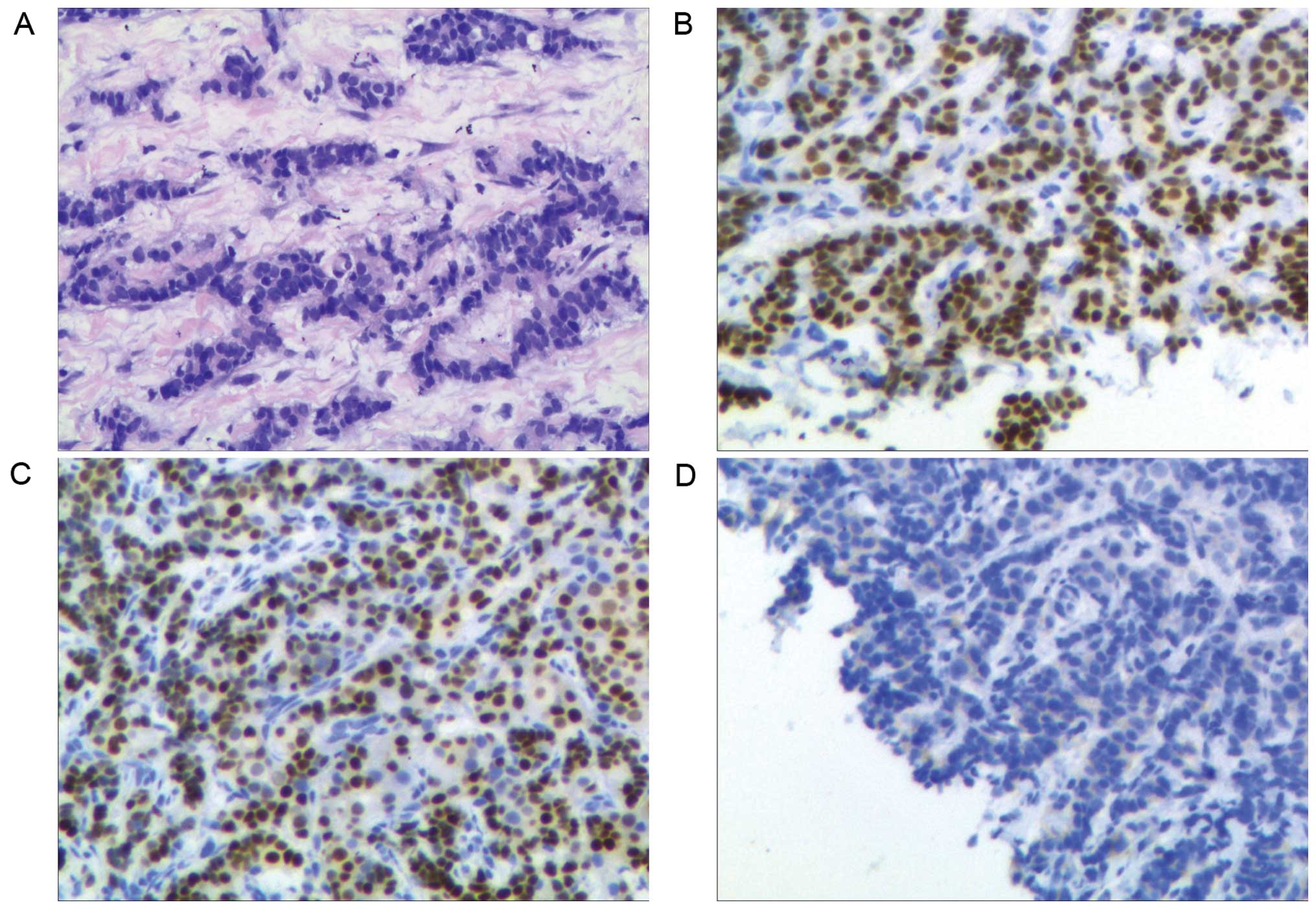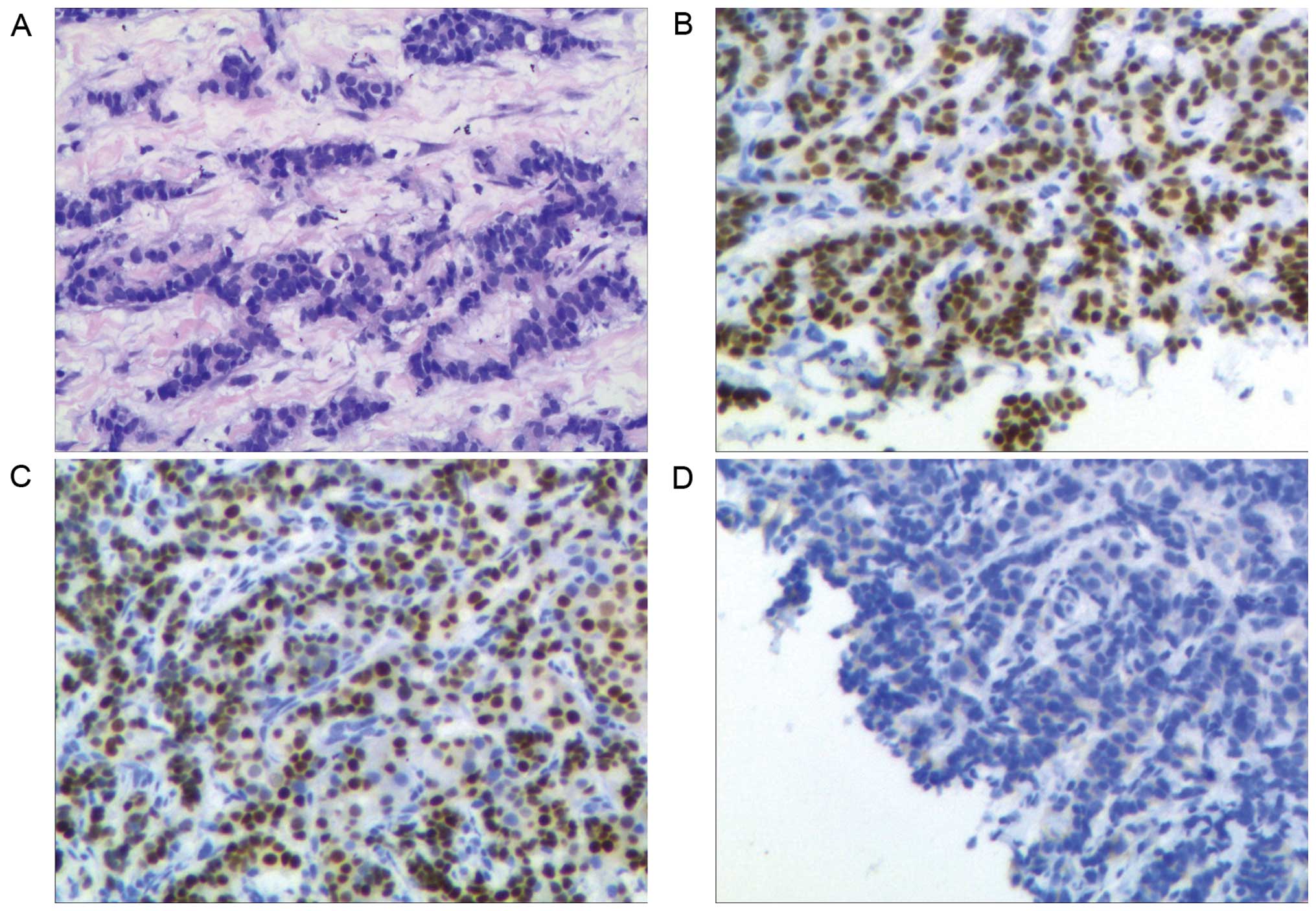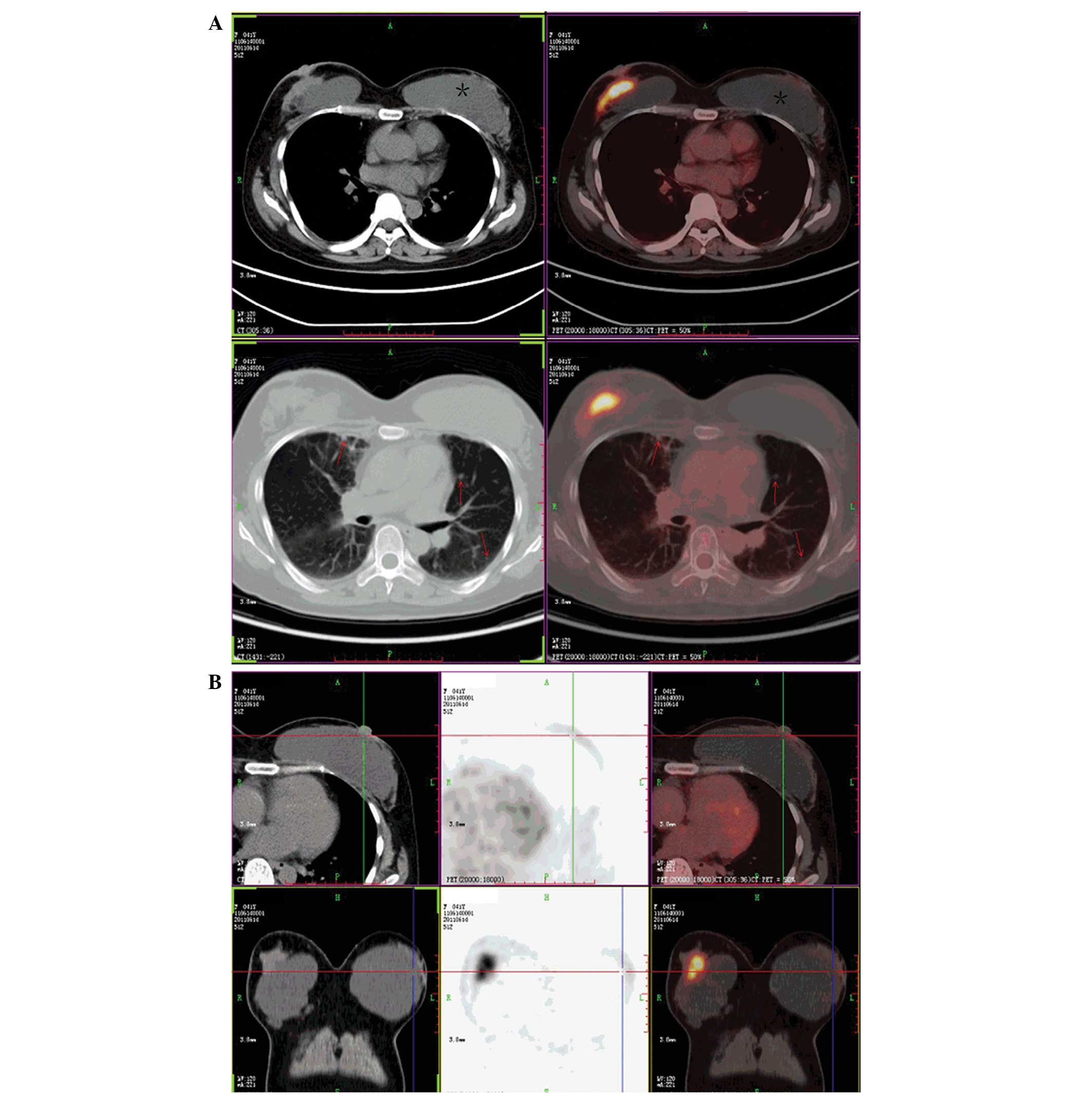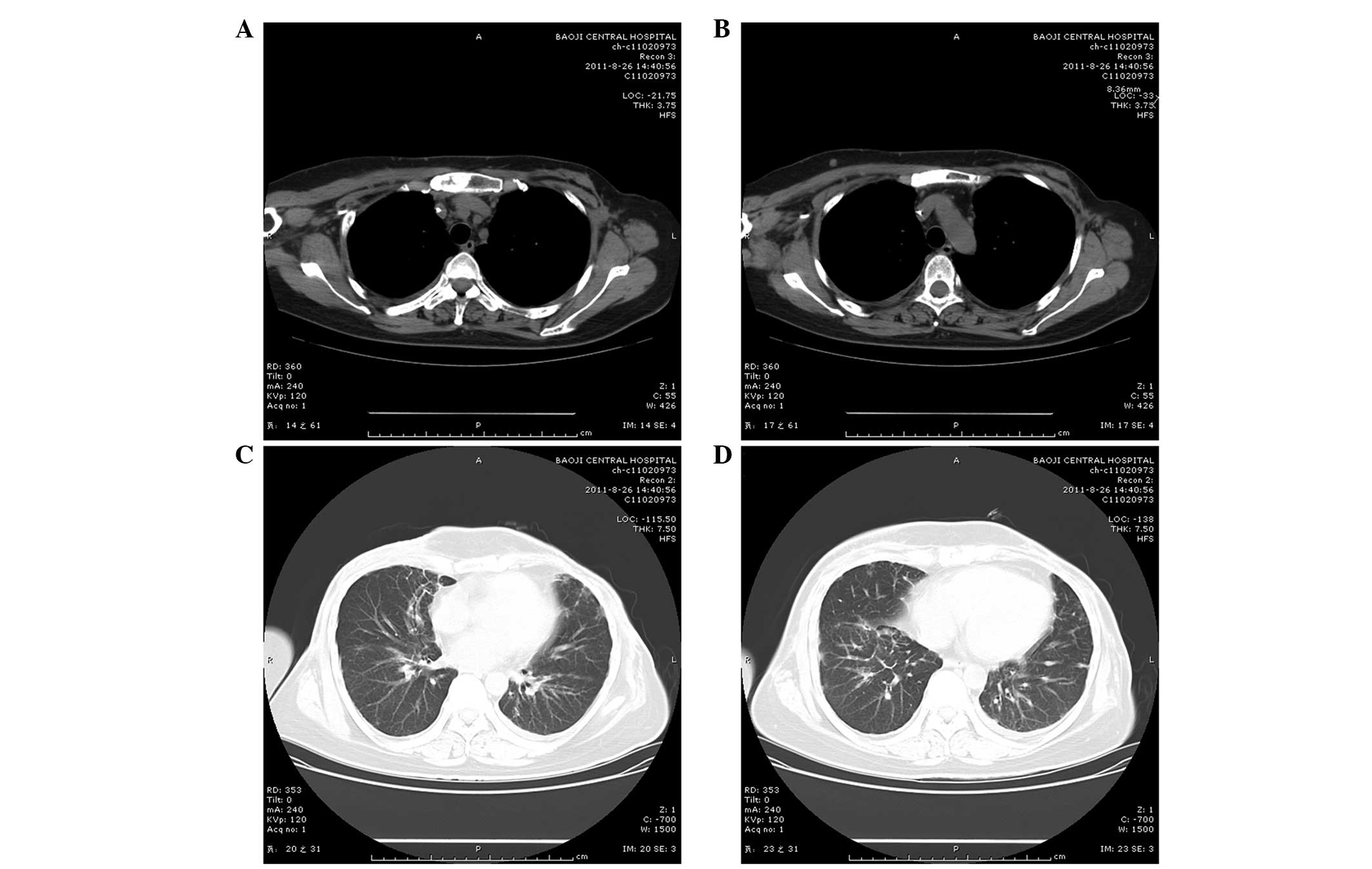|
1
|
Stephens S: Final report on the safety
assessment of polyacrylamide. J Am Coll Toxicol. 10:193–198. 1991.
View Article : Google Scholar
|
|
2
|
Christenen LH, Breiting VB, Aasted A, et
al: Long-term effects of polyacrylamide hydrogel on human breast
tissue. Plast Reconstr Surg. 111:1883–90. 2003. View Article : Google Scholar : PubMed/NCBI
|
|
3
|
de Cassia Novaes W and Berg A: Experiences
with a non-biodegradable hydrogel (Aquamid): A pilot study.
Aesthetic Plast Surg. 27:376–81. 2003. View Article : Google Scholar : PubMed/NCBI
|
|
4
|
Lloyd AW, Faragher RG and Denyer SP:
Ocular biomaterials and implants. Biomaterials. 22:769–72. 2001.
View Article : Google Scholar : PubMed/NCBI
|
|
5
|
Lin J, Qian YL, Yang Q, et al: Clinical
analysis of complications of polyacrylamide hydrogel injection for
augmentation mammoplasty in 118 cases. Zhonghua Zheng Xing Wai Ke
Za Zhi. 23:101–102. 2007.(In Chinese). PubMed/NCBI
|
|
6
|
Abdallah A, Wesemann A, Saklaoui O, et al:
Breast-conserving treatment of breast cancer after augmentation
with injected hydrophilic polyacrylamide gel and review of the
literature. Gynakol Geburtshilfliche Rundsch. 49:35–38. 2009.(In
German). View Article : Google Scholar : PubMed/NCBI
|
|
7
|
Cheng NX, Liu LG, Hui L, Chen YL and Xu
SL: Breast cancer following augmentation mammaplasty with
polyacrylamide hydrogel (PAAG) injection. Aesthetic Plast Surg.
33:563–569. 2009. View Article : Google Scholar : PubMed/NCBI
|
|
8
|
Liu L, Long M, Wang J, et al: Quantitative
analysis of diffusion-weighted imaging for diagnosis of puerperal
breast abscess after polyacrylamide hydrogel augmentation
mammoplasty: compared with other conventional modalities. Aesthetic
Plast Surg. Jan 1–2015.(Epub ahead of print). View Article : Google Scholar
|
|
9
|
Carmichael AR, Bendall S, Lockerbie L,
Prescott R and Bates T.: The long-term outcome of synchronous
bilateral breast cancer is worse than metachronous or unilateral
tumours. Eur J Surg Oncol. 28:388–91. 2002. View Article : Google Scholar : PubMed/NCBI
|
|
10
|
Gollamudi SV, Gelman RS, Peiro G, et al:
Breast conserving therapy for stage I–II synchronous bilateral
breast carcinoma. Cancer. 79:1362–1369. 1997. View Article : Google Scholar : PubMed/NCBI
|
|
11
|
Johnston PG, Lenz HJ, Leichman CG, et al:
Thymidylate synthase gene and protein expression correlate and are
associated with response to 5-fluorouracil in human colorectal and
gastric tumors. Cancer Res. 55:1407–1412. 1995.PubMed/NCBI
|
|
12
|
Kakimoto M, Uetake H, Osanai T, et al:
Thymidylate synthase and dihydropyrimidine dehydrogenase gene
expression in breast cancer predicts 5-FU sensitivity by a
histocultural drug sensitivity test. Cancer Lett. 223:103–111.
2005. View Article : Google Scholar : PubMed/NCBI
|
|
13
|
Bepler G, Kusmartseva I, Sharma S, et al:
RRM1 modulated in vitro and in vivo efficacy of gemcitabine and
platinum in non-small-cell lung cancer. J Clin Oncol. 24:4731–4737.
2006. View Article : Google Scholar : PubMed/NCBI
|
|
14
|
Seve P and Dumontet C: Is class III
beta-tubulin a predictive factor in patients receiving
tubulin-binding agents? Lancet Oncol. 9:168–175. 2008. View Article : Google Scholar : PubMed/NCBI
|
|
15
|
Braybrooke JP, Levitt NC, Joel S, et al:
Pharmacokinetic study of cisplatin and infusional etoposide
phosphate in advanced breast cancer with correlation of response to
topoisomerase IIalpha expression. Clin Cancer Res. 9:4682–4688.
2003.PubMed/NCBI
|
|
16
|
Brase JC, Schmidt M, Fischbach T, et al:
ERBB2 and TOP2A in breast cancer: a comprehensive analysis of gene
amplification, RNA levels, and protein expression and their
influence on prognosis and prediction. Clin Cancer Res.
16:2391–2401. 2010. View Article : Google Scholar : PubMed/NCBI
|
|
17
|
Xi TF, Fan CX, Feng XM, Wan ZY, Wang CR
and Chou LL: Cytotoxicity and altered c-myc gene expression by
medical polyacrylamide hydrogel. J Biomed Mater Res A. 78:283–290.
2006. View Article : Google Scholar : PubMed/NCBI
|
|
18
|
Jobsen JJ, van der Palen J, Ong F and
Meerwaldt JH: Synchronous, bilateral breast cancer: prognostic
value and incidence. Breast. 12:83–88. 2003. View Article : Google Scholar : PubMed/NCBI
|
|
19
|
Matsuo K, Fukutomi T, Akashi-Tanaka S,
Hasegawa T and Tsuda H: Histological grade, p53, HER2 and hormone
receptor status of synchronous bilateral breast carcinoma. Breast
Cancer. 9:127–133. 2002. View Article : Google Scholar : PubMed/NCBI
|
|
20
|
Tulusan AH, Ronay G, Egger H and
Willgeroth F: A contribution to the natural history of breast
cancer. V. Bilateral primary breast cancer: incidence, risks and
diagnosis of simultaneous primary cancer in the opposite breast.
Arch Gynecol. 237:85–91. 1985. View Article : Google Scholar : PubMed/NCBI
|
|
21
|
Burns PE, Dabbs K, May C, et al: Bilateral
breast cancer in northern Alberta: risk factors and survival
patterns. Can Med Assoc J. 130:881–886. 1984.PubMed/NCBI
|
|
22
|
Gollamudi SV, Gelman RS, Peiro G, et al:
Breast-conserving therapy for stage I–II synchronous bilateral
breast carcinoma. Cancer. 79:1362–1369. 1997. View Article : Google Scholar : PubMed/NCBI
|
|
23
|
Chaudary MA, Millis RR, Hoskins EO, et al:
Bilateral primary breast cancer: a prospective study of disease
incidence. Br J Surg. 71:711–714. 1984. View Article : Google Scholar : PubMed/NCBI
|
|
24
|
Pandis N, Teixeira MR, Gerdes AM, et al:
Chromosome abnormalities in bilateral breast carcinomas.
Cytogenetic evaluation of the clonal origin of multiple primary
tumors. Cancer. 76:250–258. 1995. View Article : Google Scholar : PubMed/NCBI
|
|
25
|
Imyanitov EN, Suspitsin EN, Grigoriev MY,
et al: Concordance of allelic imbalance profiles in synchronous and
metachronous bilateral breast carcinomas. Int J Cancer.
100:557–564. 2002. View Article : Google Scholar : PubMed/NCBI
|
|
26
|
Saad RS, Denning KL, Finkelstein SD, et
al: Diagnostic and prognostic utility of molecular markers in
synchronous bilateral breast carcinoma. Mod Pathol. 21:1200–1207.
2008. View Article : Google Scholar : PubMed/NCBI
|
|
27
|
Coradini D, Oriana S, Mariani L, et al: Is
steroid receptor profile in contralateral breast cancer a marker of
independence of the corresponding primary tumour? Eur J Cancer.
34:825–830. 1998. View Article : Google Scholar : PubMed/NCBI
|
|
28
|
Intra M, Rotmensz N, Viale G, et al:
Clinicopathologic characteristics of 143 patients with synchronous
bilateral invasive breast carcinomas treated in a single
institution. Cancer. 101:905–912. 2004. View Article : Google Scholar : PubMed/NCBI
|
|
29
|
Janschek E, Kandioler-Eckersberger D,
Ludwig C, et al: Contralateral breast cancer: molecular
differentiation between metastasis and second primary cancer.
Breast Cancer Res Treat. 67:1–8. 2001. View Article : Google Scholar : PubMed/NCBI
|
|
30
|
Safal M, Lower EE, Hasselgren PO, et al:
Bilateral synchronous breast cancer and HER-2/neu overexpression.
Breast Cancer Res Treat. 72:195–201. 2002. View Article : Google Scholar : PubMed/NCBI
|
|
31
|
Seo MY, Rha SY, Yang SH, et al: The
pattern of gene copy number changes in bilateral breast cancer
surveyed by cDNA microarray-based comparative genomic
hybridization. Int J Mol Med. 13:17–24. 2004.PubMed/NCBI
|
|
32
|
Agelopoulos K, Tidow N, Korsching E, et
al: Molecular cytogenetic investigations of synchronous bilateral
breast cancer. J Clin Pathol. 56:660–665. 2003. View Article : Google Scholar : PubMed/NCBI
|
|
33
|
Ferlini C, Raspaglio G, Cicchillitti L, et
al: Looking at drug resistance mechanisms for microtubule
interacting drugs: does TUBB3 work? Curr Cancer Drug Targets.
7:704–712. 2007. View Article : Google Scholar : PubMed/NCBI
|
|
34
|
Kaira K, Takahashi T, Murakami H, et al:
The role of βIII-tubulin in non-small cell lung cancer patients
treated by taxane-based chemotherapy. Int J Clin Oncol. 18:371–379.
2013. View Article : Google Scholar : PubMed/NCBI
|
|
35
|
Jain M, Zhang L, He M, Zhang YQ, Shen M
and Kebebew E: TOP2A is overexpressed and is a therapeutic target
for adrenocortical carcinoma. Endocr Relat Cancer. 20:361–370.
2013. View Article : Google Scholar : PubMed/NCBI
|















